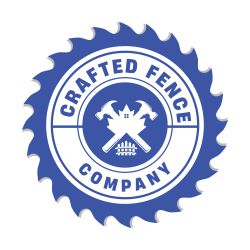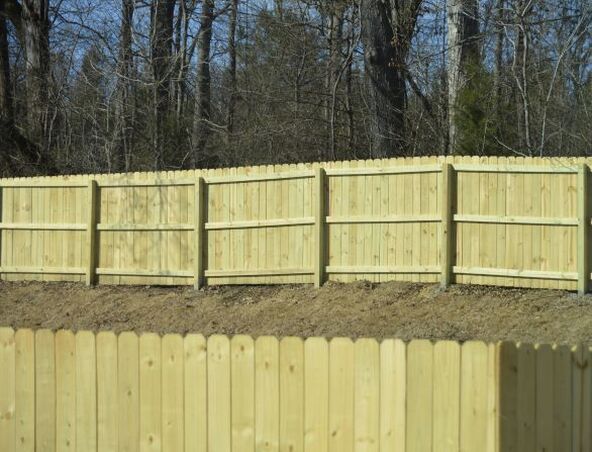Treated Wood Fence Lewisville TX
Treated wood fencing is an excellent choice for homeowners and business owners alike who are looking for an attractive, durable, and cost-effective solution to secure their property. With a wide variety of designs, styles, and finishes available, treated wood fencing can enhance the aesthetic appeal and value of any property while providing a reliable barrier against unwanted intrusion.
Why Choose Treated Wood for Your Fencing Needs
Long-lasting and durable: Treated wood fences are designed to withstand harsh weather conditions, insects, and rot. The preservatives used in the treatment process prolong the lifespan of the wood, ensuring that your fence will remain sturdy and strong for years to come.
Environmentally friendly: Responsibly sourced and treated wood is a renewable resource, making it an eco-conscious choice for those who are concerned about the impact of their fencing materials on the environment.
Cost-effective: Compared to other fencing materials such as metal or vinyl, treated wood fences tend to be more affordable while still offering excellent durability and performance.
Customizable: Treated wood fencing can be easily customized to suit your personal taste and the overall design of your property. With a range of paint, stain, and finish options available, the possibilities are virtually limitless.
Types of Treated Wood Fencing
There are several different types of treated wood fencing available, each with its own unique advantages and characteristics. Some popular options include:
Pressure-treated pine: This is a widely used option, known for its affordability and durability. The pressure-treatment process helps to protect the wood from insects, rot, and decay, ensuring a long-lasting fence that requires minimal maintenance.
Cedar: Cedar is a popular choice for its natural resistance to insects and decay. Although it is generally more expensive than pressure-treated pine, many homeowners find that the rich color and attractive grain of cedar make it well worth the investment.
Redwood: Redwood is another high-quality option, prized for its beauty, strength, and natural resistance to decay. While it tends to be more expensive than other types of treated wood, redwood fencing is an excellent investment that will enhance the appearance and value of your property for years to come.
Installation and Maintenance Tips for Treated Wood Fencing
To get the most out of your treated wood fencing, it is essential to follow some best practices for installation and maintenance:
Proper installation: Hiring a professional installer with experience in treated wood fencing is crucial to ensure that your fence is installed correctly and safely. Proper installation will maximize the lifespan and performance of your fence.
Sealant application: Applying a high-quality sealant or stain to your treated wood fence will help protect it from the elements, extend its lifespan, and enhance its appearance. Be sure to follow the manufacturer's recommendations for the best results.
Regular maintenance: Inspect your fence regularly for signs of damage or wear, and address any issues promptly to prevent further deterioration. Keep the area around your fence clear of debris and vegetation to reduce the risk of insect infestation and rot.
Repairs and replacements: If you notice any damaged or rotting boards, it is essential to repair or replace them as soon as possible. This will help maintain the structural integrity of your fence and prevent further damage.
Treated wood fencing is an excellent option for those seeking a beautiful, durable, and cost-effective barrier for their property. With proper installation and maintenance, a treated wood fence can provide years of reliable protection and aesthetic appeal. To ensure the best results, always consult with a professional installer and follow the recommended maintenance guidelines for your specific type of treated wood fencing.
Selecting the Right Style for Your Treated Wood Fence
Treated wood fencing is available in various styles and designs, allowing you to find the perfect match for your property. Some popular styles to consider include:
Privacy fences: These tall fences provide a solid barrier that prevents outsiders from seeing into your property. They are ideal for homeowners who value their privacy and wish to create a secluded outdoor space.
Picket fences: Picket fences are a classic choice for residential properties, featuring evenly spaced vertical boards with pointed tops. They provide a charming and traditional look while still offering a moderate level of security.
Split rail fences: Commonly used in rural settings, split rail fences are characterized by their simple, rustic design. They consist of horizontal rails supported by vertical posts and are ideal for creating a natural-looking boundary around your property.
Lattice fences: Lattice fences feature a crisscross pattern that offers a unique and visually appealing design. They can be used as standalone fencing or as decorative panels on top of other fence styles to add an extra touch of elegance.
Maximizing the Value of Your Treated Wood Fence
To get the most out of your treated wood fencing investment, consider the following tips:
Quality materials: Choose high-quality treated wood from a reputable supplier to ensure that your fence will last for years to come.
Professional installation: As mentioned earlier, it is essential to hire a skilled installer with experience in treated wood fencing to ensure proper installation and long-lasting results.
Aesthetic appeal: Customize your fence with paint, stain, or other finishes to match your property's design and enhance its overall appearance.
Routine maintenance: Regularly inspect and maintain your fence to keep it looking its best and extend its lifespan.
Safety Considerations for Treated Wood Fencing
While treated wood fencing is a popular and durable choice, it is essential to be aware of potential safety concerns related to the chemicals used in the treatment process. Some tips for ensuring a safe and healthy environment around your treated wood fence include:
Wear protective gear: When working with treated wood, always wear gloves, safety goggles, and a dust mask to avoid contact with chemicals.
Proper disposal: Dispose of treated wood scraps and sawdust according to local regulations to prevent environmental contamination.
Avoid burning: Never burn treated wood, as it can release harmful chemicals into the air.
Use caution with edibles: If you have a vegetable garden or fruit trees near your treated wood fence, take care to prevent direct contact between the wood and the plants to minimize the risk of chemical contamination.
Treated wood fencing is an excellent choice for property owners seeking an attractive, durable, and cost-effective solution for their fencing needs. By selecting the right style, ensuring proper installation, and following best practices for maintenance and safety, you can enjoy a beautiful and long-lasting treated wood fence that enhances the appearance and value of your property.

